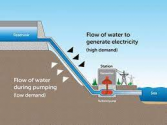The Organisation for Economic Cooperation and Development has raised its forecast for China’s economic growth this year to 8.5 percent, up from a 7.8 percent prediction in March, saying investment remains a key growth engine as consumption gradually recovers.
Next year’s growth is likely to be 5.8 percent, the Paris-based agency said in its latest Economic Outlook report released yesterday, up from a previous forecast of 4.9 percent.
“Growth in 2021 will be strong and return to the gradually slowing pre-pandemic path thereafter,” the OECD said in the report.
High export demand will keep industry busy, while surging prices of imported raw materials will have only a limited affect on consumer price inflation because of the low import content of consumption, the OECD said. Investment and exports will remain strong, as construction projects restart and overseas demand picks up.
The OECD also lifted its outlook for the global economy to 5.8 percent this year from 5.6 percent, and 4.4 percent next year from 4 percent.
Rising vaccination rates in China will boost consumer confidence in the country, but to achieve a sustainable pickup, the social welfare net needs to be strengthened. Though China has implemented strict measures to keep the coronavirus under control, the OECD still advises extensive vaccination coverage to underpin a full economic recovery.
Vaccination uptake in China has not been as fast as expected, as the lower chance of getting infected has discouraged people from getting inoculated, even though some local governments offer benefits such as free pick-up services. Even if, as expected, 40% of the population is covered by early summer, there is still a long way to go to before so-called herd immunity is reached at about 70%.
“Monetary policy is assumed to turn more neutral as the recovery firms,” the OECD said, while “fiscal policy will provide less support than in 2020 as the recovery is solid in most sectors.”
"Investment and exports will remain robust as infrastructure projects restart and foreign demand recovers,” it said. “The current account surplus is projected to rise further as a result and as the recovery of tourism imports is delayed.”
A faster pace of corporate defaults will “improve risk pricing, but may adversely affect banks and trust companies, as well as other private and institutional investors,” the report added.
Restricting access to the corporate bond market for local government investments will help contain corporate debt as well as reduce contingent liabilities at the local government level. Improved regulations by credit rating agencies will cause rating dispersion, and provide investors with better guidance, the OECD said.

